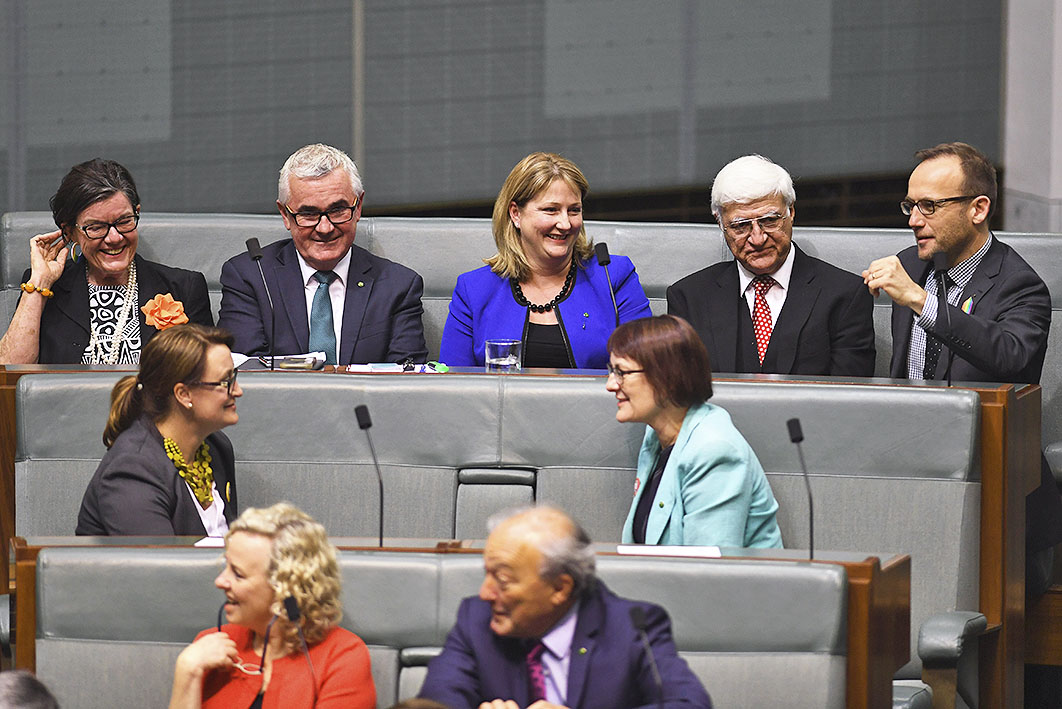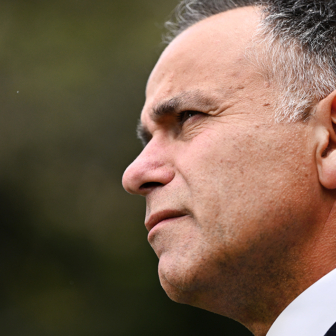At the July 2016 federal election, 23.2 per cent of voters gave their first preference to a minor party or an independent, the highest non-major vote since the formation of the Liberal Party in 1944. Yet the figure translated into a crossbench of only five seats out of 150, or 3.3 per cent.
There’s nothing inherently wrong with that apparent mismatch. We elect our lower house MPs with a single-member voting system, which produces outsized results for big parties. If we wanted a more proportional votes-to-seats relationship, we could change the House of Representatives electoral system to, well, a proportional one (as is used for the Senate).
So how did those five crossbenchers — one Greens, three independents and one Centre Alliance member — get there?
Bob Katter was a Nationals MP who quit his party and easily retained his seat in 2001. Andrew Wilkie and Adam Bandt, in 2010, and Cathy McGowan, in 2013, were initially elected despite trailing on primary votes, thanks to friendly major-party how-to-vote cards. Now they top the primary vote and survive regardless of major-party preferences.
The fifth, Rebekha Sharkie, came to Mayo in 2016 thanks partly to the poor standing of incumbent Liberal Jamie Briggs, and partly to the popularity of her party leader Nick Xenophon. She too lost the primary vote, but in this case it’s debatable whether Labor how-to-vote cards made the difference. Sharkie easily retained Mayo at this year’s by-election. With Xenophon gone from her party name, that victory was all about her; she might as well have been an independent.
Meanwhile, opinion polls continue to show national support for each of the major parties stuck in the thirties. This flight to the minors — a long-term trend that’s accelerated in recent years — is not driven by a great love for the alternatives as much as by increasing dissatisfaction with the two creaky old relics of bygone eras.
The last time a House of Representatives had a crossbench as big as this was in 1996, when the major parties received 86 per cent between them and the rest shared 14 per cent. You might expect that the more than doubling of that “other” vote would have produced a significantly larger number of seats. One reason this hasn’t occurred can be found in those Labor and Liberal how-to-vote cards.
Since One Nation’s emergence in 1998, Labor has consistently preferenced Pauline Hanson’s party behind the Coalition. At the last two federal elections, the Liberals have put the Greens behind Labor. These two strategies make it difficult for either minor party to gain a lower house foothold. (Bandt initially won Melbourne in 2010 under the old Liberal practice of preferencing Greens ahead of Labor.)
Although the Greens can expect to retain Melbourne at the next election, preference dynamics will again present hurdles for the two minor parties in the lower house. But seats like Higgins (Victoria), where Labor rather than Liberal preferences are distributed, will be worth watching for the Greens, and the party also has an outside chance of overcoming Liberal preferences in Labor seats such as Cooper (formerly Batman). Similarly, the Coalition tends to preference One Nation these days, so that party’s best chances are in electorates where the main contender is Labor.
The non-major-party vote is likely to increase again at next year’s election. If the trend continues, something will eventually have to give, in the form of an exponential jump in the crossbench size. If that doesn’t mean more Greens or One Nation MPs, then it means another minor party, or more independents.
The larger the expected crossbench, the greater the likelihood of hung parliaments. A Coalition or Labor government that formed government with the support of a minor party — say, the Centre Alliance — would actually find the Senate more amenable, because the minor party could be expected to be more cooperative in that chamber as well.
But a minority government reliant on a gaggle of independents? Along with an obstructionist Senate? That would make governing extremely difficult, whichever side ended up on the Treasury benches.
It is time for a serious rethink about our electoral arrangements. As has been suggested before. •





